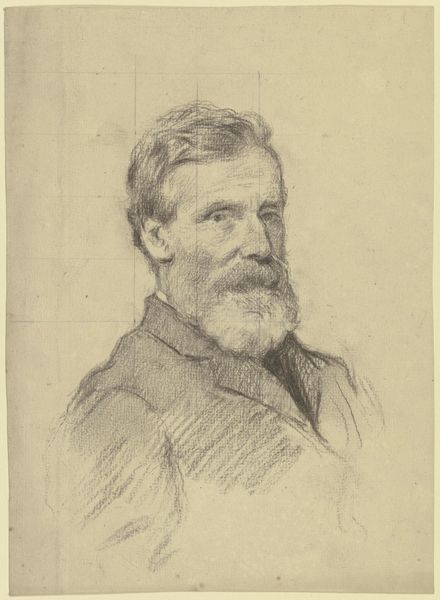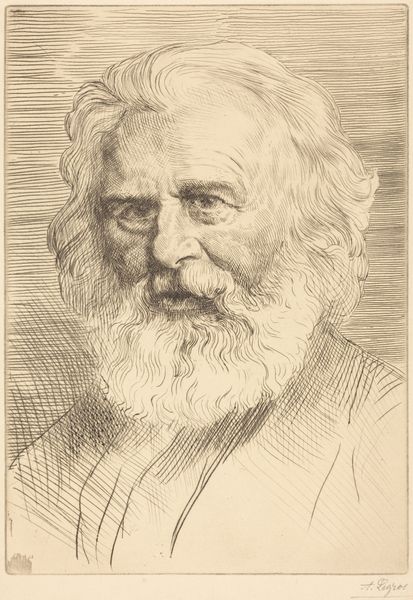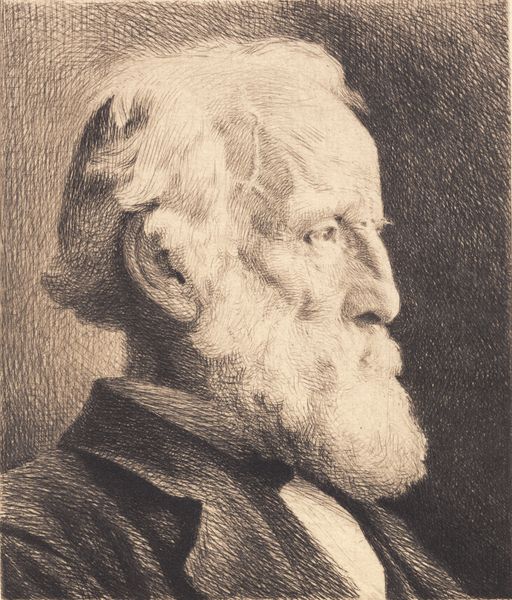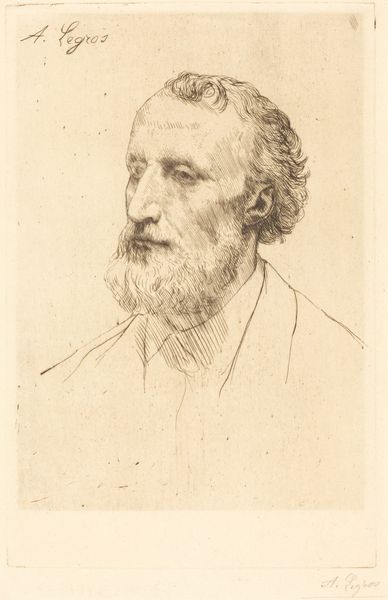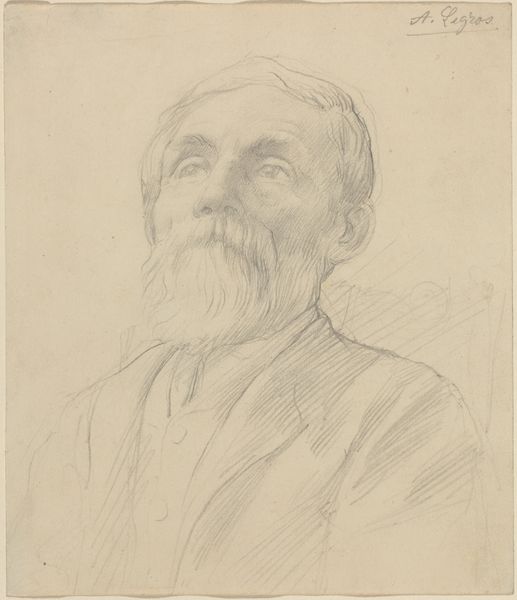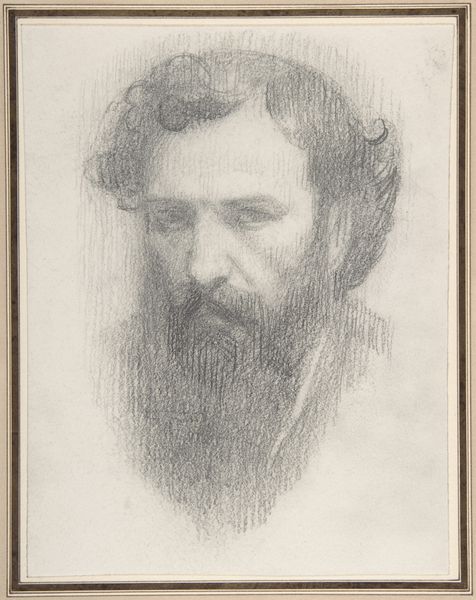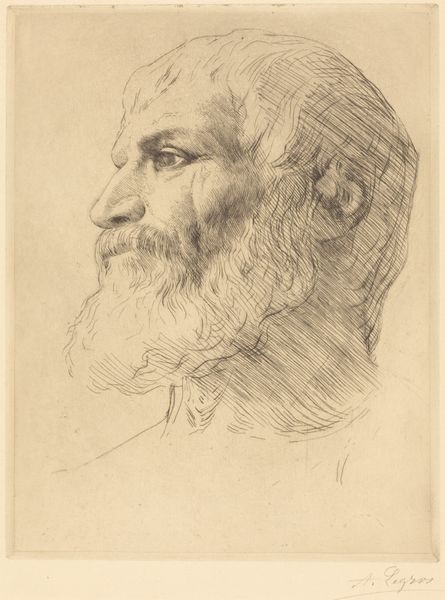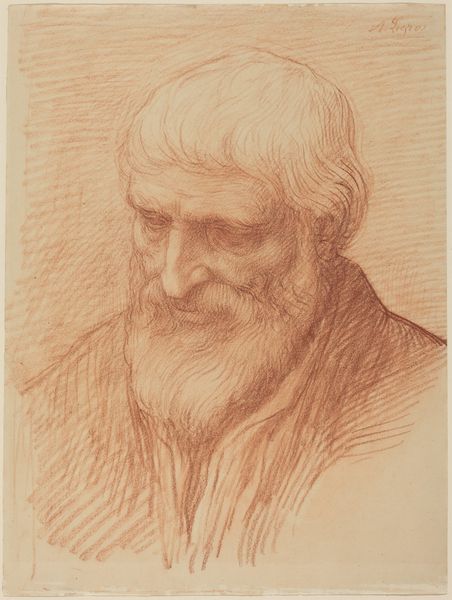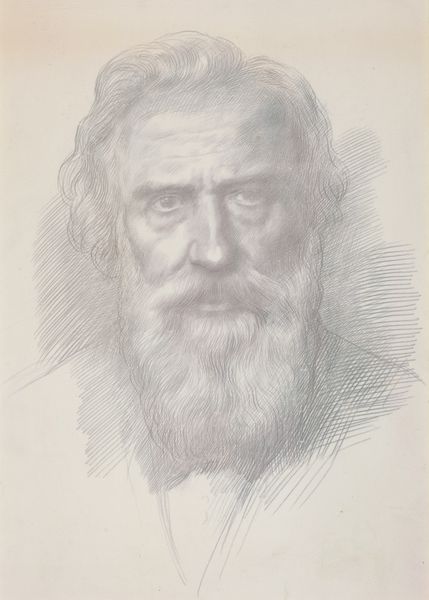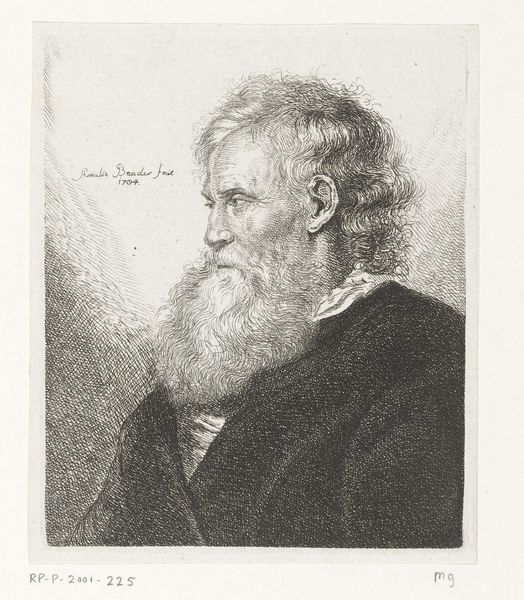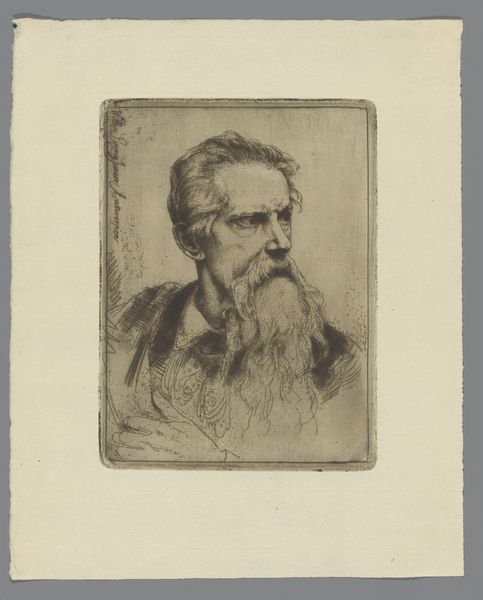
drawing, paper, chalk, charcoal
#
portrait
#
pencil drawn
#
drawing
#
facial expression drawing
#
16_19th-century
#
pencil sketch
#
charcoal drawing
#
paper
#
portrait reference
#
german
#
pencil drawing
#
romanticism
#
chalk
#
animal drawing portrait
#
portrait drawing
#
charcoal
#
portrait art
#
fine art portrait
Copyright: Public Domain
Editor: So, this is Wilhelm Amandus Beer’s portrait of Ferdinand Klimsch. It’s a drawing using charcoal, chalk, and pencil on paper. I find it quite striking; there's a sense of immediacy and character that I don't always get from more formal portraits. What draws your attention when you look at this work? Curator: Well, firstly, observe how the beard, like an attribute of wisdom and experience, serves not just as a physical feature, but as an emblem. Consider the history of beards. Throughout time and across cultures, a beard carries specific connotations, right? Here, does it represent Klimsch’s status as an established artist, or something more intimate about his persona? Editor: That’s a great point about the beard. I hadn’t thought about it as a symbol so much. Do you see any other symbolism at play? Curator: Note how the artist used light and shadow. The face is well lit. The background fades out of focus, drawing your attention back to Klimsch’s sharp gaze and expression. Are we meant to consider Klimsch’s intense stare? Editor: It does feel very direct. There’s almost a vulnerability there, despite the confident brushstrokes and…well, beard! Curator: Perhaps the artist meant to convey vulnerability, making this a study of character that transcends mere physical representation. He encourages us to engage not only with what we see but also with what the image makes us feel. Editor: So it's almost a psychological portrait as much as a physical one? It’s interesting to consider how even a simple drawing can hold such layers of meaning and intent. Curator: Precisely. By dissecting these symbols, we're uncovering cultural memory itself and gaining deeper insight into the emotional landscape of the work, as well as the cultural moment that produced it.
Comments
No comments
Be the first to comment and join the conversation on the ultimate creative platform.
